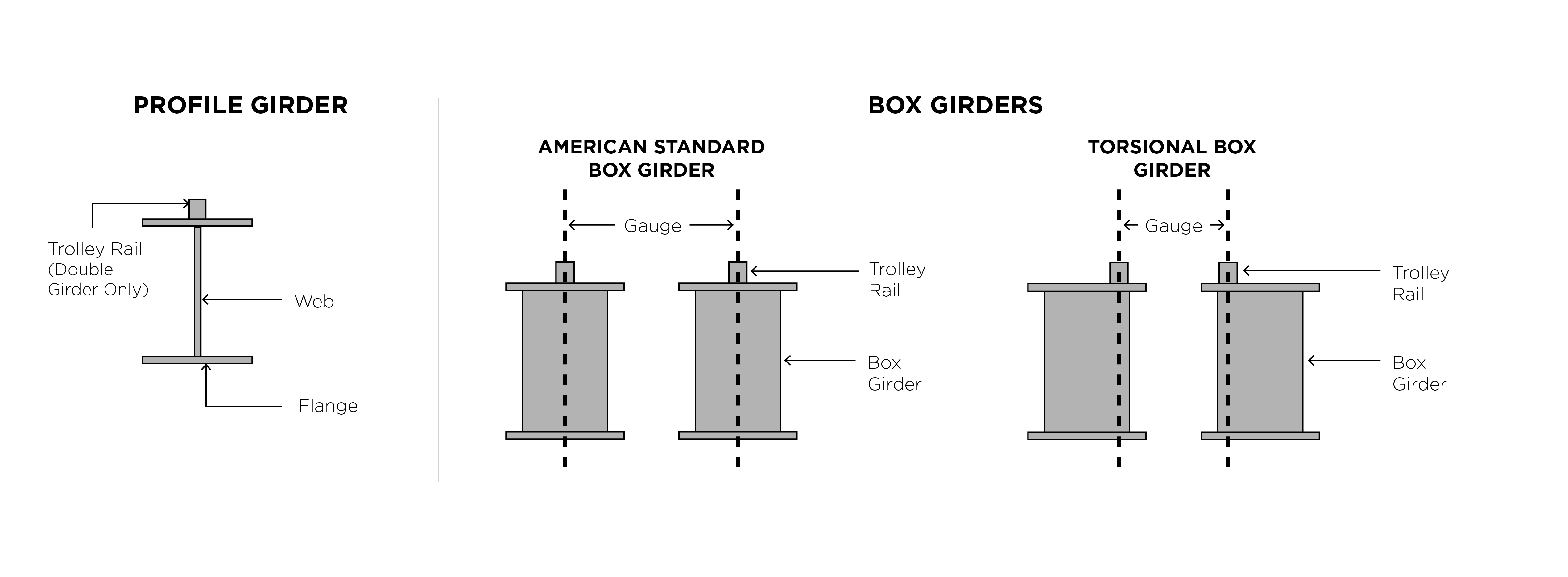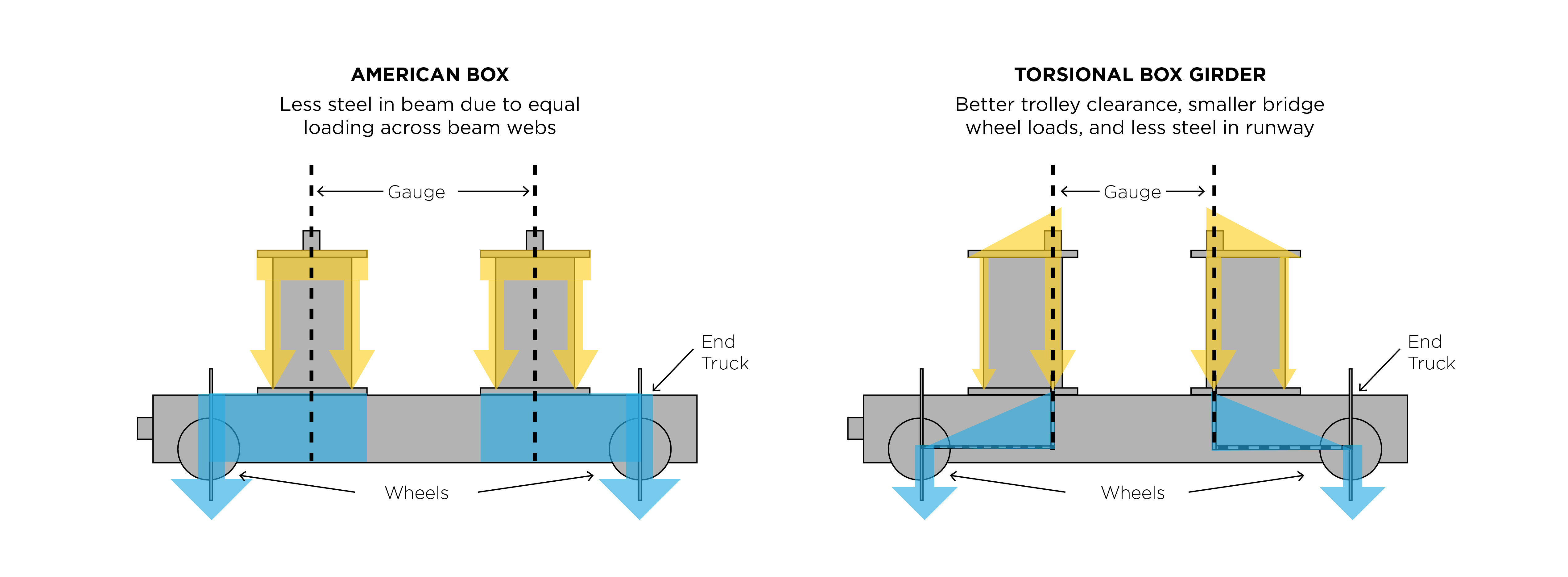Date: 6/9/2022
Previous Blog: The Core of Lifting
Girders are horizontal metal beams designed to support the hoist and trolley and carry the load of materials being lifted. There are two primary types of bridge girders commonly used: Profile Girders and Box Girders.

A profile girder is a steel beam that can be purchased pre-manufactured for various applications and is found commercially available in a set standard of sizes. Depending on the live load capacity and crane configuration design, a girder is selected to meet or exceed the structural requirements according to CMAA.
Box girders (which, as the name implies, are shaped like a box) are used when a crane’s capacity or span exceed the acceptable limit for a profile girder. While they are more expensive due to engineered construction, box girders can span longer bridge distances and provide the extra support needed for larger capacity loads.
From a structural perspective, box girders also reduce the girder’s height by distributing weight across two webs rather than one. This can save crucial headroom in an application with confined dimensions. Profile girders, while sufficient for smaller loads, only have one web distributing that support. However, they are a more cost-effective option.
Profile Girders
A profile girder can be defined as a beam made up of one web and two flanges.
Web: The vertical element spanning the middle of the beam, perpendicular to the floor.
Flanges: The horizontal elements on the top and bottom of the web, parallel to the floor.
These girders are also commonly known as W profile beams or S profile beams, the different letters referring to the beam’s profile shape as defined by the AISC standard structural steel dimensions. The W beam (in some settings referred to as an I or H beam) has wide flanges with straight, flat edges. An S beam has tapered flanges that start thick closer to the web and grow thinner towards the periphery with a large radius in the transition.
At a certain point, a profile girder will hit its limit where it is no longer suitable for the application. Lifting applications that are high-capacity or long-span may make profile girders impractical to use or unavailable in a sufficient size. If this is the case and profile girders are no longer an option, then the best recourse is to use an engineered box girder.
Box Girders
The heavier your load, the stronger the beam will need to be to carry it, and the longer the span, the more protection from bending force the beam will need to counteract the deflection. Box girders are ideal for these situations due to their strength, structure, and how much they can support compared to profile girders. Additionally, because box girders are fabricated for the application, a broader range of sizes and designs are available. When determining whether a box girder is the appropriate choice for your application, crane builders consider the load and span elements among other defining factors. R&M’s proprietary design software allows Master Distributor crane builders to quickly and accurately size both box girders and profile beams and choose the most economical option.
Box beams, usually shaped like rectangles or trapezoids, always include at least two webs and two flanges. They can also use internal gussets that support the beam’s hollow box shape. Their multiple vertical webs provide significantly more strength than profile beams in ratio to the girder’s height. With their compact design, box girders can save substantial headroom in heavy-duty applications.
Gusset: Tertiary plates that connect the flanges to the webs or end joints, acting as a bracket to increase the girder’s strength.
There are two main styles of box beams for double girder cranes:
- Standard or American box beam
This type of beam has the trolley rail located in the top center of the box and allows a beam design with the most economical use of steel to fabricate the girder.
- Torsional box beam
This beam uses the trolley rail located above the inside web of each beam on a double girder crane. This structure puts more pressure on the inside web than the outside web; however, it allows the hoist and trolley to nest in between the girders to offer the most compact crane design and best headroom. As the load transfers from the girder to the end truck, it is further from the wheel which helps reduce wheel loading. Smaller wheel loads often mean the end trucks or runway rail can be smaller and wear on these components is reduced over the crane’s lifetime.

As a general rule, if you are handling large capacities and/or your crane span is longer than 60 feet, R&M recommends using box girders to support your application. CMAA and ASTM give standards on deflection, loading and the composition of the steel to ensure standard levels of safety across our industry.
Which girder is the best choice for your next project? Contact us online or call 800-955-9967 to talk with an expert about your application needs or use our Crane Designer tool for an immediate equipment recommendation.
